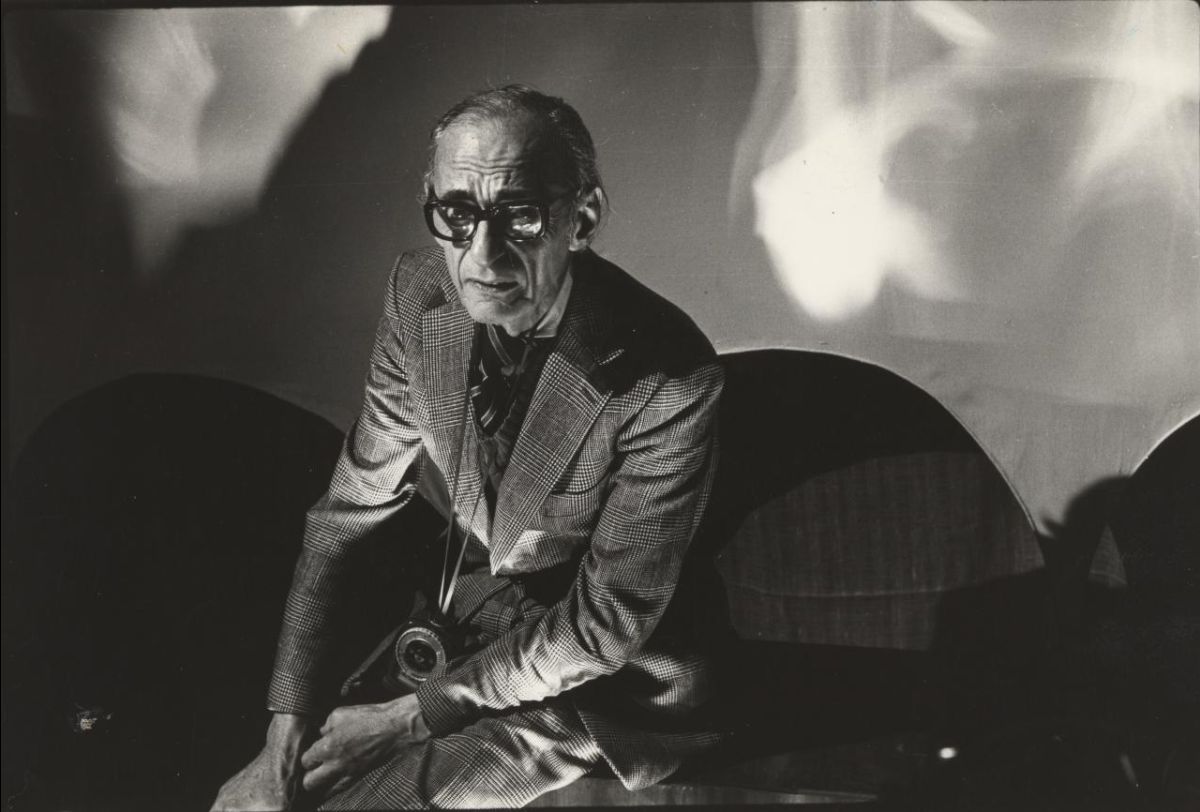Connor on Shmith by Millowick.
CAM holds a significant collection of photographic portraits of Australian artists. In this Reflection Angela Connor considers Julie Millowick’s striking portrait of Athol Shmith. Connor selected this photograph to bring to light the work of women artists of Central Victoria.

Athol Shmith by Julie Millowick
In her portrait of Athol Shmith (1914–1990), Julie Millowick (1948–) frames the sartorial elegance of a man who made a significant contribution to Australian art and culture. The photograph was taken when Millowick was 28, at the start of her photographic career, a year before she would be invited into the group exhibition Australian New Work at the National Gallery of Victoria in 1977. In 1976, Shmith was 62 and Head of Photography at the Prahran College of Advanced Education, where Millowick graduated the following year. Having taken up the position in 1971, leaving his commercial studio behind, Shmith would influence a new generation of artists, including Carol Jerrems, Sue Ford, Bill Henson and Christopher Koller.
Athol Shmith’s fashion and illustration photographs have been credited with forging an image of the evolving glamour and style of Australian women for over four decades, from the early 1930s to the late 1960s. Over the course of his professional career, he photographed visiting celebrities that included Vivien Leigh, Laine Francis, Sally Gilmour, Gracie Fields, Elizabeth Taylor and Judy Garland. His technical ability and compositional mastery were influenced early on by the work of Edward Steichen, Cecil Beaton and George Hurrell. Later he became enamoured of the photographic energy of Richard Avedon.
Julie Millowick’s black-and-white portrait captures a powerful sense of engagement, amplified by the knowledge that she worked as Shmith’s studio assistant. His highly emotive gaze, enclosed by his thick black-rimmed glasses, conveys the trust between subject and photographer, creating an image that resonates with warmth, humanity and sensitivity. Outside the frame, Millowick’s portrait sits within the historical context of the 1970s, with the rising of Australian feminism and some of Melbourne’s key photographic moments. Carol Jerrems had just produced Vale Street (1975), and was documenting marginalised sub-cultures; Sue Ford was in the midst of her Time series, and had recently been invited to exhibit her works at the National Gallery of Victoria (1974), the first Australian photographer to hold a solo exhibition there; Ponch Hawkes was preparing works for her exhibition Our Mums and Us to show at Brummels Gallery (1976). In addition, Millowick could be found walking the streets of St Kilda and Fitzroy documenting the changing social and political conditions.
There is something about black-and-white portraits that I am particularly drawn to. Perhaps it’s the lack of chromatic distractions or the way that images are reduced to composition, shapes and patterns. Or perhaps it’s the nostalgic qualities that linger, long after the subject has passed. While the current generation of photographers may not know who Shmith was, his influence, whether directly or indirectly, has been vast. I was first introduced to Athol Shmith’s photographic work by way of his grandson, Sam Shmith, a photographer whose sublime cinematic landscapes are composed of thousands of digitally composited images.
Millowick’s portrait marks a distinct time and place in Australia’s photographic history, and the legacy of Shmith continues to thrive through his photographic archives, family and students.
The photograph was gifted by Julie Millowick to the Castlemaine Art Museum the year after Athol Shmith passed.
Angela Connor
December 2020